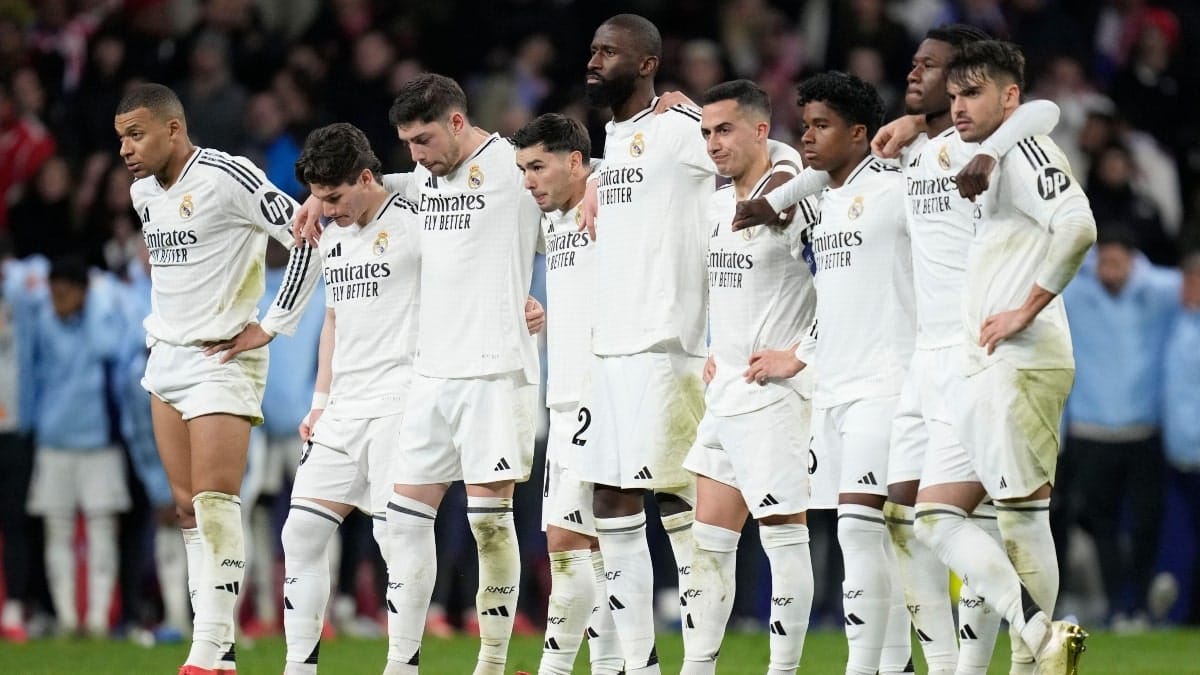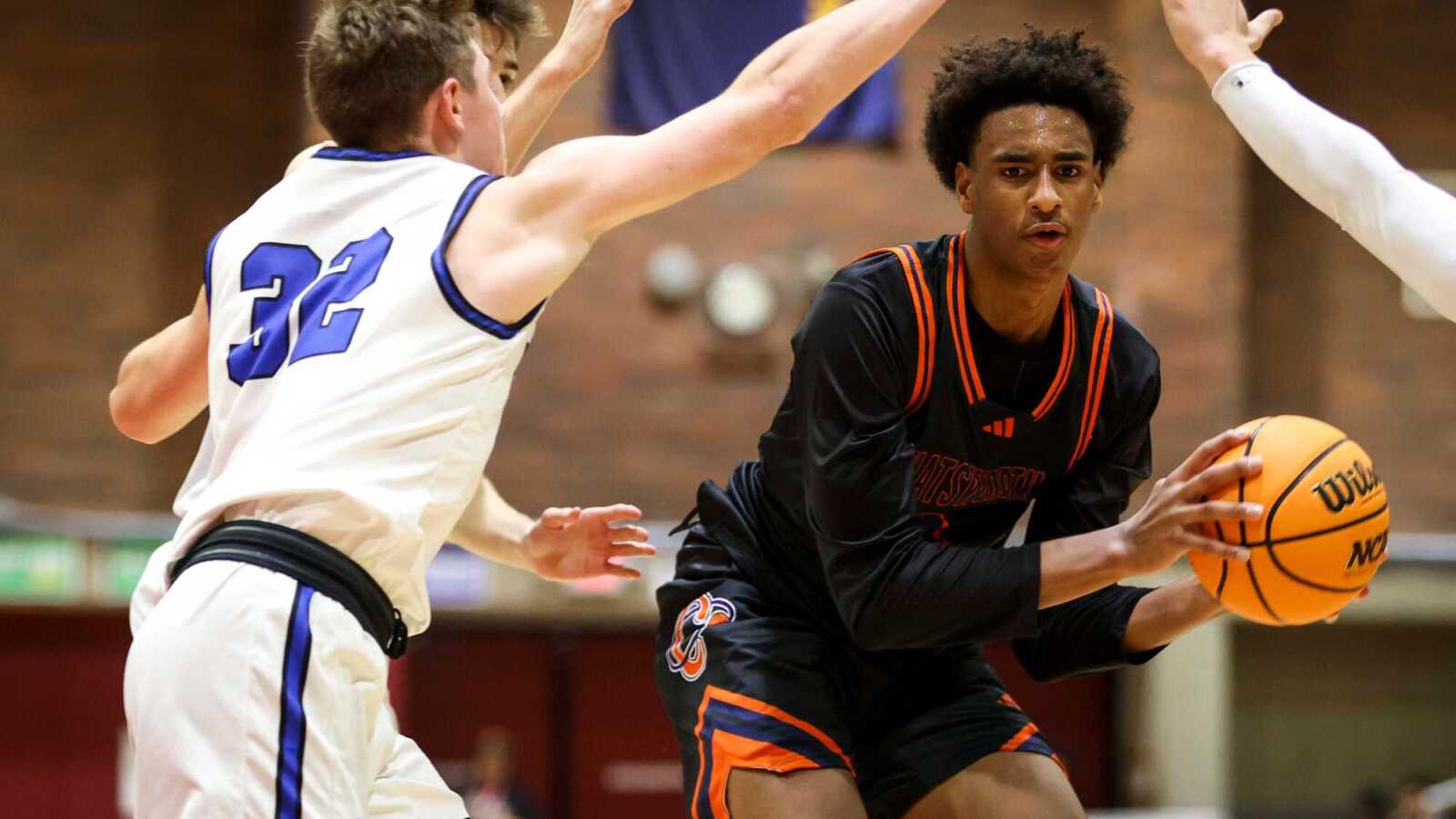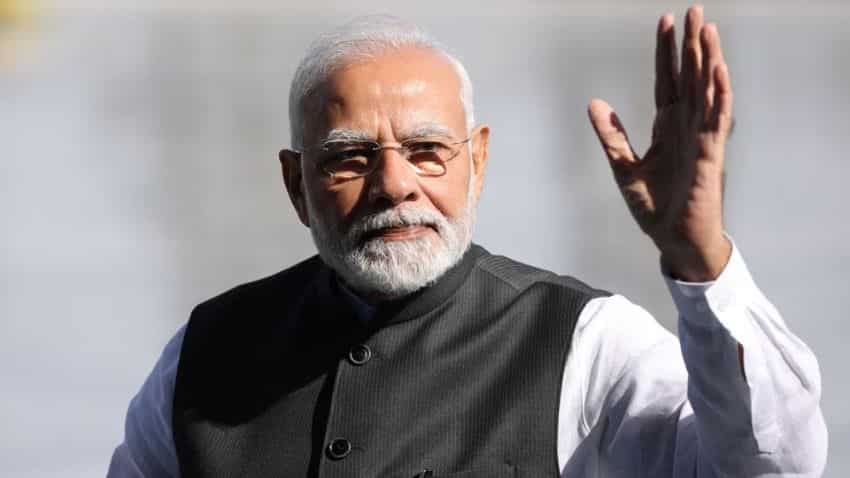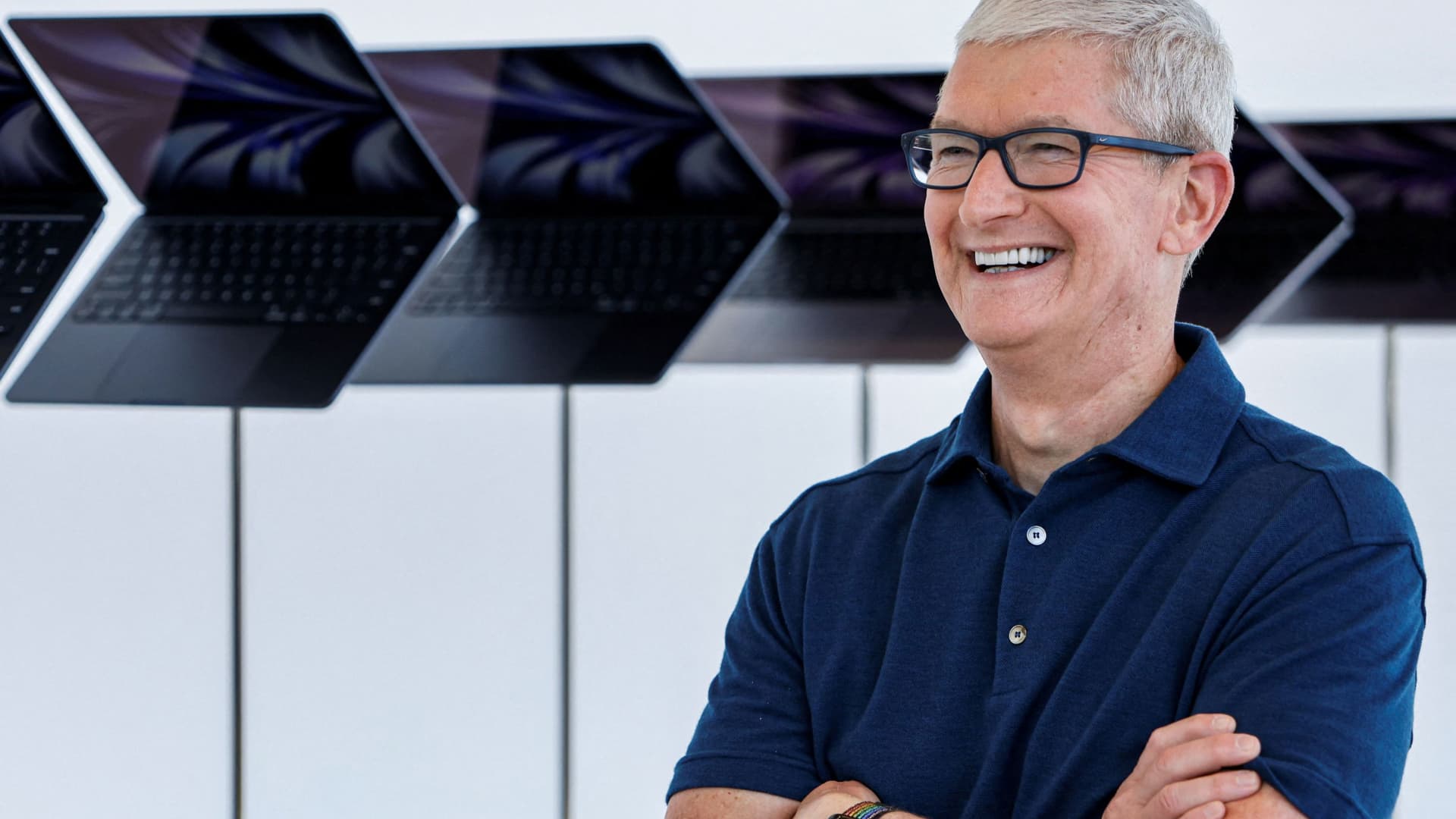WAUNAKEE, Wis. – A few hours after practice begins with players juggling tennis balls and Def Leppard rattling through the gym, a little while after serving groups are divided into Packers fans and non-Packers fans, Kelly Sheffield sits in a wine bar and describes his first office as a college volleyball head coach. This was at Albany. He shared space with rakes, shovels and snowmobiles belonging to the grounds crew. He assumes his computer was the first one ever made. For the first home match, he scrubbed net poles wearing his suit. Thirteen people showed up.
This audience, on this Tuesday night, is into it. It should be. We’re a short drive north of Wisconsin’s campus. Also it’s $100 a head to get in.
“B.S. and Bourbon” is the event, with part of the proceeds redirected to volleyball NIL efforts. Storytelling is required, and Sheffield cycles through his library of hits. How he inherited the school’s “party team,” as he puts it, and somehow it reached the NCAA championship match that winter of 2013. How he schemed to get air conditioning installed in UW Field House. How he ticked off the Big Ten and television networks with a tweet about coverage. How Waunakee police once pulled him over because he was following his young daughter in his car near a park and someone called in a suspicious driver.
People laugh between sips, but there’s a gasp, too, when the guest of honor jokes that he can’t talk about his playing career because there isn’t one. It’s a seminal fact, and yet, wildly, news to some patrons: Sheffield runs a volleyball powerhouse having never competed in the sport. How their coach has performed that bit of alchemy, how he’s become a filter-free advocate for the game while building a team positioned to chase another national title, is essentially a mystery to them.
He doesn’t need all night to explain that part.
“If I didn’t ask questions,” Sheffield tells the crowd at Red & White Winebar, “I wouldn’t be where I am right now.”
Wisconsin’s volleyball team won the 2021 NCAA championship. (Jamie Schwaberow / NCAA Photos via Getty Images)
As of Thanksgiving week, the total is 559 wins in 22-plus seasons across three jobs, including 18 appearances in the NCAA Tournament. Wisconsin volleyball has reached five Final Fours, and Kelly Sheffield has been on the sideline for four of them. It was four straight Big Ten championships until a loss at then-No. 16 Purdue on Friday put a fifth out of reach. This stopped being quirky a long time ago. Actually, this isn’t even the first time a head coach with zero playing experience has led a volleyball leviathan, nor the first time such a coach has received a paycheck from this particular school. John Cook — the head coach in Madison from 1992-98 — checks both boxes, and he’s bringing unbeaten No. 1 Nebraska to town on Friday for a rematch of a five-set epic played on Oct. 21.
Still, this is the first time a historically competitive program has a coach with a national championship trophy displayed on an end table, and it’s a little preposterous that “18-year-old 8th grade cross-country coach” is one of the first lines on his resume. To boot, the Badgers run a system used by only a small fraction of the country’s 300-plus programs, while occasionally doing circus tricks before practice or watching Monty Python clips or singing along to Earth, Wind & Fire in the film room. (On the 21st of September, naturally, after Sheffield hand-wrote the lyrics on the dry erase board.)
Because he didn’t come up in thrall to the sport’s conventions, Wisconsin’s coach sees things eclectically. He doesn’t believe there’s a limit to discoverable answers in the game. Think like a scientist, Sheffield tells his team, over and over and over again. “Sometimes you’re testing things out and it’s not always going to be perfect,” says junior Anna Smrek, the Badgers’ 6-foot-9 – that’s correct, 6-foot-9 – middle blocker/right side hitter. “It’s kind of like a hypothesis. You’re working things out. It’s not your statement yet, right?”
It’s the fun in the 53-year-old’s fascination with volleyball — “Every match, there is a path to winning, and I’m obsessed with trying to find that,” Sheffield says — and it is perhaps only exceeded by how he fell into it.
He grew up in Muncie, Ind., and the extent of his volleyball experience was putting a cutout of a ball on his head and cheering for a Burris High School team that was in the midst of winning 21 state championships in 35 seasons. He was a student at Ball State when a former high school classmate called to ask if Sheffield had seen her boyfriend at a bar the previous night. As it happened, the former classmate was coaching Burris’ junior varsity team. As it happened, Sheffield was a single college guy. So he offered to help, should help ever be needed from someone who knew next to nothing about the sport.
His first year was 1989. The team went undefeated. He’d plunged into Muncie’s volleyball incubator at peak temperature. “I loved the techniques,” Sheffield says. “I loved the tactics, I loved the systems. I loved the challenge of not knowing, but the chase of trying to know.” As he added duties with Munciana Volleyball Club, he visited any practice he could, from high school teams to Rick Majerus’ basketball workouts at Ball State to the college’s marching band rehearsals. He filled legal pads with exacting details: names of drills. Where the coach stood. The words coming out of his or her mouth. He would spend three hours at the Ball State student union writing a two-hour practice plan. He hit against a wall, again and again, to teach himself good hand contact so he could input balls properly in practice and actually get things done.
He bartended at night and obsessed on coaching during the day, working any camp or clinic that would have him. “This wasn’t about a career at all,” Sheffield says. “I was having a blast.”
After Sheffield worked a Bowling Green camp during his mid-20s, then-Falcons coach Denise Van De Walle recommended him to longtime Houston coach Bill Walton for a limited-earnings position. Sheffield worked Walton’s camp and then interviewed for the gig. His first impression was … not great. Walton asked Van De Walle why she sent him this loser who ordered a Diet Coke instead of a beer. “He called me up and said, ‘I don’t want to hire you, but Denise is making me,’” Sheffield recalls. He packed his car in two hours, drove 20 more, and made the second workout of two-a-days in the summer of 1997, the start of a new path worth a tidy $12,000 a year.
But then, all along, Sheffield has felt like he’s getting paid to do something he’d pay someone to let him do. It satisfies the competitive urges of a guy who wants to bet on which elevator will open first, or which grocery store line will move quickest. It feeds a compulsion to figure things out. The closest Sheffield gets to explaining it: He was once the youngest Eagle Scout in Indiana history. And then someone put him in charge of a college volleyball team.
“If you’re going to start something,” Sheffield says, “let’s fricking go.”
Which means questions. All the questions. Like the time at Dayton he wondered why the band didn’t show up for volleyball matches, and the response “Well, it never has” wasn’t good enough. “Kelly does not have the bias of experience to keep him from reaching high,” says Wisconsin associate head coach Brittany Dildine, who has been on Sheffield’s staff since 2009.
How else to explain those first frenzied months in Madison in 2013? Sheffield interviewed in a suit he borrowed from his brother-in-law, ran out of gas during the move from Dayton and inherited a roster with four future first- or second-team All-Americans … but not a lot of direction or discretion. The Badgers had missed four straight NCAA Tournaments. One of the first team meetings lasted three hours. “We had to learn to be tough,” says Wisconsin assistant coach Annemarie Hickey, who was then a senior. “It was very, ‘What we’re going to try to do is hard,’ and he laid it all out in front of us.”
That group reached the national championship game as a No. 12 seed, losing to Penn State. The bar hasn’t lowered since.
Instant success, for the head coach whose career started in the equivalent of an equipment shed. It’s ironic only if you weren’t in that Chevy Tahoe on the road from Dayton to Madison long ago. Somewhere along the way, Dildine thought of a very important question.
“Well,” she said, “what are we going to do at Wisconsin?”
Her boss looked at her, incredulous.
“What are you talking about?” Sheffield replied. “We do what we do. We just do it there.”
Three days after coming up irritatingly short in the most-watched regular-season volleyball match ever — that five-set inferno at Nebraska that delivered 612,000 viewers — Wisconsin fills its film room and a very matter-of-fact discussion meanders to the concept of trust. If you’re in a place where you’re trying to do too much, the head coach says, you’re losing trust. Doesn’t matter if the gym is a kiln and it’s so loud the vitriol merges into one endless, thrashing soundwave.
We do our thing, he says. We do our thing and we’re good enough.
Wisconsin volleyball’s thing, basically, is a miasmic flow of ideas adapted to, and executed by, extremely versatile and talented players. There is structure. But there is no permanence. Only the time being, until the next thought. It’s what you get a decade into the Kelly Sheffield experience, with a roster built to fulfill his wildest dreams. “I would never want to be inside Kelly’s brain,” Hickey says. “I think it would be exhausting. But that’s what makes him so good at what he does.”
Wisconsin works because it can change. In every way.
Smrek was a competitive dancer until she was 14 years old. Setter Izzy Ashburn played three sports in high school. (She also dropped band after one year.) Middle blocker/right side hitter Devyn Robinson played basketball before dropping it for volleyball and also ran track. The positional pigeonholing prevalent in youth volleyball? It all but vanishes here. Smrek never trained on the right side until the day Wisconsin coaches floated the notion. Robinson, similarly, was recruited as a middle and added the hitter training on arrival. Ashburn came in as a setter and has been deployed as a defensive specialist, a hitter, a middle and a passer before returning to setting the last two seasons.
Julia Orzol was, well, bad at diving when she got to Wisconsin. Split her chin on the floor three times one preseason. Dildine, at one point, took Orzol to a pole vault pit and threw balls for 45 minutes as Orzol laid out for them. And in that Oct. 21 match against Nebraska, Orzol shifted from outside hitter to libero. “If you go back and watch some of her digs, she was Superwoman,” Dildine says. “And none of those were digs she was making even two weeks (before).”

Julia Orzol wasn’t great at diving when she arrived at Wisconsin, but she eventually mastered the skill. (Graham Stokes / Icon Sportswire via Getty Images)
No idea is beyond a try. “Putting us in spots where we may be uncomfortable,” Robinson says, “is where we grow.”
The result is freedom to do what many others won’t. Midway through 2022, Sheffield had a quasi-radical thought. He had excellent setters in Ashburn and M.J. Hammill. He had outrageous size with Smrek and 6-foot-7 middle Carter Booth. He had elite hitters in the 6-2 Robinson and 6-4 Sarah Franklin. He surmised he could get more size at the net and more firepower on the floor if Wisconsin switched from the ubiquitous “5-1” rotation to a “6-2” system, which required a timeshare at setter.
It wasn’t a light bulb flickering on. It was a dozen alarm clocks going off at once. “People right away were like, you’re crazy,” Ashburn says. “Why are you even trying that?” Sheffield estimates maybe 5 percent of 300-plus Division I teams employ the “6-2.” He believes Southern California was the last team to win a national title running the system, in the early aughts. Wisconsin? Lost in five sets to Pittsburgh in the Elite Eight a year ago and has won 24 of 27 matches this season. The offense ranked No. 2 nationally both in hitting percentage (.310) and blocks per set (3.01) entering the penultimate weekend of the regular season.
During a European exhibition tour last summer, Sheffield suggested Ashburn and Hammill take turns running matches in a 5-1, just because. They declined. It wasn’t who Wisconsin was. “No questions, no selfishness — just find the flow of the game individually and together and communicate,” Ashburn says. “It really is an advantage to have another setter’s eyes from the bench, letting you know what they’re seeing, or what success they’re having.”
Sheffield concedes none of this happens without what he describes as a “paradigm shift” at Wisconsin; a robust, uncompromising commitment to resourcing volleyball. It began with the air conditioning and getting the wasps out of the Field House roof. Then came a new locker room and a new floor and a new scoreboard. Now Wisconsin charters to road games. Mindfulness coaches are a text away. Last offseason, the Badgers received Oura rings and weighted blankets and pads that change the temperature of their beds as part of a program-wide sleep study. “How it is here,” says Franklin, who played two years at Michigan State before transferring in, “is not even close to how it is at other schools.”
All volleyball programs would like more stuff. Fewer enjoy the institutional imperative to procure it. “Each year (Sheffield) looks for things we can dive into deeper,” associate head coach Gary White says. “If something new comes out, we’re like, could we build that into our program? How do we benefit from this information? We’re always looking for that.”
Which brings us to 4:26 p.m. on a Tuesday in October, and the pop-up lab inside UW Field House.
“We’re scientists right now,” the head coach tells his team.
The Badgers are well into the season, but what feels like solid ground always floats on something more fluid. Today’s test subject is tempo. Wisconsin hits with sufficient speed at the net and the back row. Sheffield thinks his team goes slow in the middle of the floor when it doesn’t have to. He wants his hitters to be athletic and accelerate, which requires a different kind of feed from the setter. And this requires everyone to rehearse the scenario repeatedly while communicating about where the ball is or should be.
Nine minutes in, Sheffield hits pause. It’s not quite getting there. He lines the hitters up single-file. One by one, they approach and swing. No traffic. Just timing and mechanics and discussion. The experiment, reduced to its core elements. “Some places are like, no matter what our hitter’s percentage is, we’re running this tempo, and that’s it,” Hammill says. “In those moments, it’s very collaborative to what’s going to get us the best results.”
It’s the serious work amid the dodgeball contests and “Anchorman” clips and team field trips to see Bruce Springsteen in Zurich at the end of that Europe tour. The science juxtaposed with calculated madness.
That alchemy, though, is in the moments when it’s hard to tell the difference.
Like tennis balls juggled to hone hand-eye coordination. Or the one preseason Sheffield wanted to see less spin on sets, and he had Hammill and Ashburn set balloons. They thought it was ridiculous. It worked. Of course.
“He’s just a big kid,” Franklin says, “who knows volleyball really well.”
These days, yes, sometimes the big kid acts up. He has his reasons.
On March 19, 2022, Kelly Sheffield sent a couple tweets.
Don’t get me wrong, I’m happy that women’s basketball is getting this type of coverage. It’s warranted and about time, and I’m thoroughly enjoying watching the games. Volleyball should be getting the exact same coverage. Period!
— Kelly Sheffield (@KellyPSheffield) March 19, 2022
A year and a half later in a wine bar, Sheffield recalls the visit from a Wisconsin administrator provoked by these thoughts. ESPN sent a message. The Big Ten reached out. The Big Ten Network did, too. Not happy, he was told.
So be it, Sheffield replied.
“You’re willing to be patient for an amount of time,” he says, “and then let’s cut the crap.”
These aren’t his questions about how to elevate college volleyball. These are his demands. His career, after all, is a mockery of barriers to entry. People pay money just to hear him talk. Shoppers recognize Franklin, the ebullient team-leader in kills, at Plato’s Closet and ask for pictures. To Sheffield, it’s not random. It’s proof of concept.
Just like 92,003 fans watching a volleyball match played in a football stadium at Nebraska in August, the largest crowd ever to watch a women’s sporting event. A couple of weeks later, Wisconsin played Marquette at Fiserv Forum in Milwaukee, and the 17,037 attendees set an NCAA record for largest attendance at an indoor regular-season match. And, what do you know, in late October, Wisconsin and Minnesota played the first volleyball match broadcast on FOX. Big gets bigger. Presumptions shrivel.
In fact, Sheffield adds, within 48 hours of Wisconsin’s gripping first tilt with Nebraska, officials from Lambeau Field reached out about hosting a volleyball match.
The coach wants assurances of a sellout. A plan to make it an epic experience for fans and the teams. That’s what Sheffield sees, even if others can’t yet.
If everyone can make that happen? Let’s fricking go, he says.
(Illustration: John Bradford / The Athletic. Photos: Jamie Schwaberow / Getty; courtesy University of Wisconsin)
















